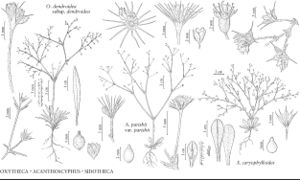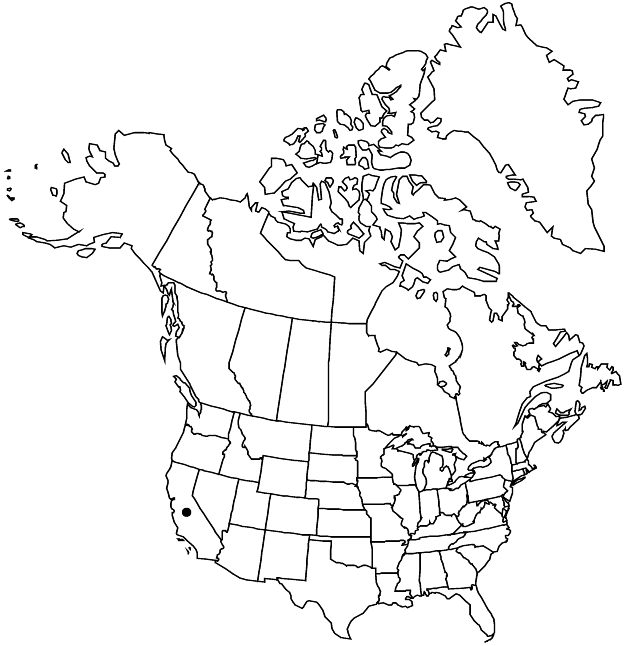Sidotheca caryophylloides
Harvard Pap. Bot. 9: 211. 2004.
Plants 1–2.5 × (0.3–)1–4(–5) dm. Stems spreading to prostrate. Leaf blades spatulate to oblanceolate, 1–6(–8) × 0.3–1.2(–1.8) cm. Inflorescences diffuse, 0.5–2 dm; bracts 3–8 × 0.5–1.5 mm, awns 0.2–0.5 mm. Peduncles erect, 0.1–1 cm, sparsely glandular or glabrous, otherwise absent. Involucres concolored, narrowly to broadly turbinate, 4–7 mm, sparsely glandular; teeth 5(–6), connate ca. 1/2 their length; awns greenish to reddish, 0.3–1 mm. Flowers 2–3; perianth greenish yellow to reddish, 1–2 mm; tepals broadly oblanceolate, 3-lobed apically 1/5 their length, lobes not laciniate; filaments 0.8–1.2 mm; anthers red, oval, 0.2–0.4 mm. Achenes golden to red-brown, 1.2–1.5 mm. 2n = 40.
Phenology: Flowering Jun–Sep.
Habitat: Sandy to gravelly flats, washes, and slopes, chaparral communities, montane conifer woodlands
Elevation: 1300-2600 m
Discussion
Sidotheca caryophylloides grows in the Transverse Ranges and the southern Sierra Nevada.
Selected References
None.

